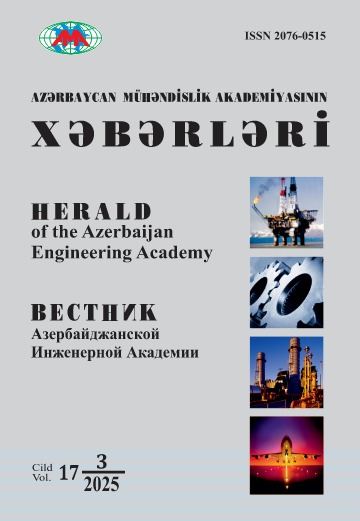EXPERIMENTAL INVESTIGATION OF THE INFLUENCE OF THE DEVIATION ANGLE OF THE ROPE ON ITS DURABILITY
DOI:
https://doi.org/10.52171/2076-0515_2021_13_01_20_24Keywords:
rope of the deflection angle, load, stress, durability, fatigue, wearAbstract
Introduction. The current level of technology development requires new regulations for the reliability and durability of load hoisting ropes. When choosing the design of ropes you need to consider the conditions in which they will be operated and make calculations based on these conditions. Experimental studies conducted by B.S. Kovalskyi, D.H. Zhytkov, K.M. Maslenikov, A.I. Kolchyn, I.F. Nikitin and others have shown that the durability of the rope depends on its design, operating modes and cannot be determined only by static strength. Problem statement. When winding the rope on the drum or when bending the rope on the blocks of pulleys there is a deviation of the ropes from the rotation plane of the blocks. When increasing the angles of deviation, there may be very negative effect caused by the fact that the deflected rope slides on board of the block stream, while wearing itself and leads to wear of the stream of the block. As the deflection angle increases, the contact line of the rope with the board of the block stream and the relative speed of displacement of the rope increases. The angles of deviation are limited taking into account the ratio D / d, where D is the diameter of the block, d is the diameter of the rope and the mode of operation of the lifting mechanism. When deflecting the rope on the drum, it is necessary to take into account the possibility of jumping rope into another groove and breaking the rope on the rowing grooves. The works of Unold, Matthyas and B.S. Kovalskyi were devoted to this issue. Analysis of current research and publications related to the problem. In [1] the modeling of metal wire ropes under the action of axial tensile and bending load is considered. The authors’ stud- ies are based on the hypothesis of the absence of friction between the wires, which is taken in the form of a thin curved rod. It has been determined that on the one hand the twisting of the rope leads to in- crease in the overall stress in the cross sections of the wire, and on the other hand, the fixing of the ends of the rope leads to increase in contact stress, especially at point contact.
Downloads
Published
How to Cite
Issue
Section
License

This work is licensed under a Creative Commons Attribution-NonCommercial 4.0 International License.



